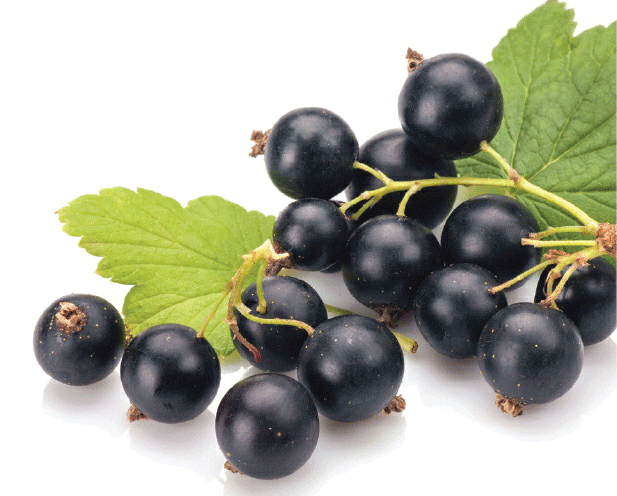During the past decade, blackcurrants have been somewhat eclipsed by the trendier, arguably more palatable, blueberry, but along with that sharp burst of flavour, blackcurrants contain a bevy of vitamins, minerals and antioxidants that have been linked to many health benefits, from staving off colds and urine infections to guarding against cancer and chronic illnesses.
These inky little berries are amazingly rich in vitamin C – in fact, one serving of blackcurrants contains four times the amount of vitamin C found in the same weight of oranges.
Blackcurrants are also one of the best sources of anthocyanins – the compounds that provide the deep purple pigment. As well as adding colour, anthocyanins are important antioxidants and are thought to help protect against ill-health, especially joint inflammation, heart disease and some cancers such as breast and ovarian.
It has even been suggested that blackcurrants could help people with asthma. This is down to a natural chemical found in the berries called epigallocatechin. Although it’s still early days, scientists have demonstrated that this compound can suppress lung inflammation in allergy-induced asthma, by working in harmony with the body’s own natural defences.
Blackcurrants may have other benefits too; one long-term study found that men who regularly consumed blackcurrants, and other flavanoid-rich foods and drinks including red wine, were significantly less likely to suffer from erectile dysfunction
If that’s not enough to persuade you to sprinkle a few blackcurrants onto your breakfast cereal or fruit salad, then just think of all that immune-boosting vitamin C.
Grow them
Blackcurrants are perfectly suited to less than perfect climates, as they are hardy, unfussy plants. They will do best in fertile, slightly acidic soil, in full sun. But if this isn’t available, they will put up with most conditions, including a bit of shade, just as long as the soil isn’t waterlogged.
The cheapest way to get started, is to buy bare-rooted plants. These can be planted between October and March, as long as the ground is not frozen. You can also buy pot-grown plants which can be planted at any time of the year.
Varieties to try:
‘Ben Nevis’ frost and mildew-resistant with good flavoured fruit.
‘Ben Sarek’ a heavy-cropping, dwarf bush, suitable for container growing.
How to plant
Dig a wide, deep hole and place the plant inside so that a good proportion of it is underground around 6 cm deeper than it was in the pot. This encourages strong growth and more fruit.
Water generously, then refill the hole with soil and press down firmly around the plant. It’s a good idea to spread some mulch around the plant, such as compost or bark chips, to conserve moisture.
After planting, trim the shoots back to just above ground level to encourage new growth – if planting during summer time, wait until winter to do this. The bush will produce fruit the following year.
Pruning and aftercare
Prune blackcurrant bushes when they are dormant from late autumn to late winter, by cutting about one third of the older, thicker and darker stems down to ground and removing low branches and shoots.
In spring, place some compost or well-rotted manure around the base of the plant to enrich the soil and keep it damp.
Blackcurrants are very low maintenance and with simple pruning, mulching and watering, they should keep going for around 15 years.
Eat them
Raw Blackcurrants Can be an acquired taste, but one that’s well worth trying to acquire, given the health benefits. Otherwise, they work brilliantly in all sorts of jams, compotes, crumbles, cheesecakes and sponges. They can also be used to accompany strongly flavoured meats like duck and venison. If fruit and meat isn’t your kind of fusion, this easy sorbet is a winner on a hot day.
Recipes



0 Comments